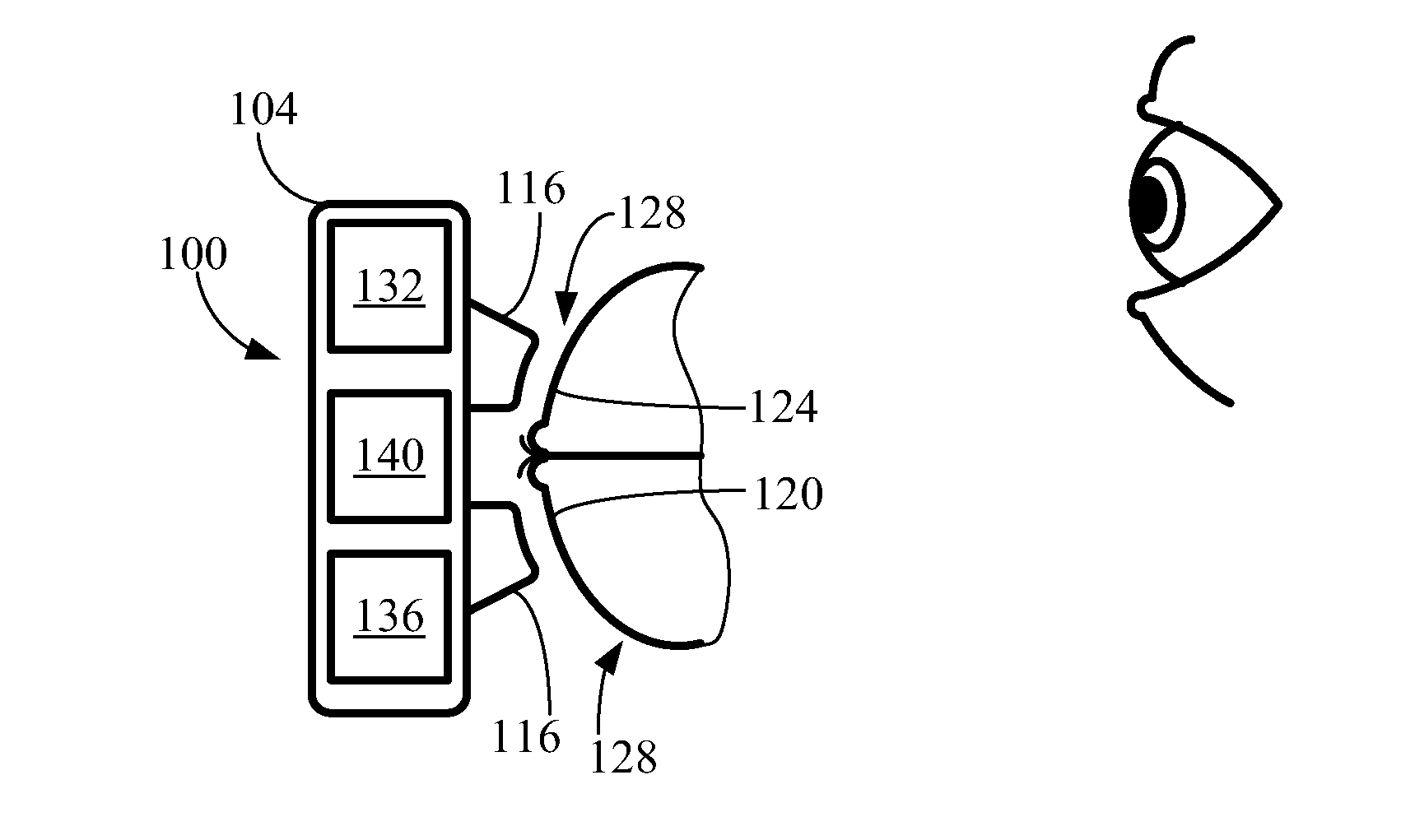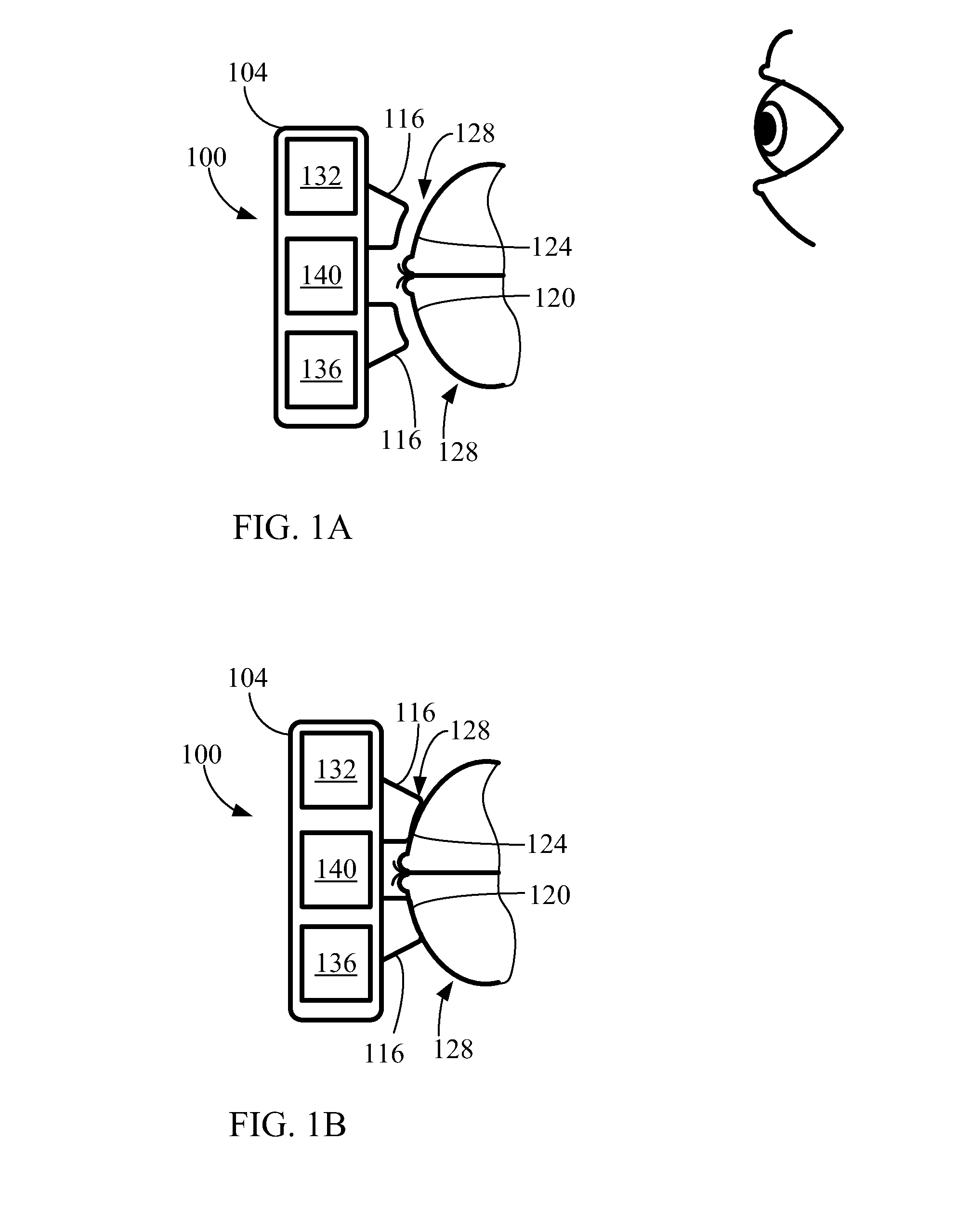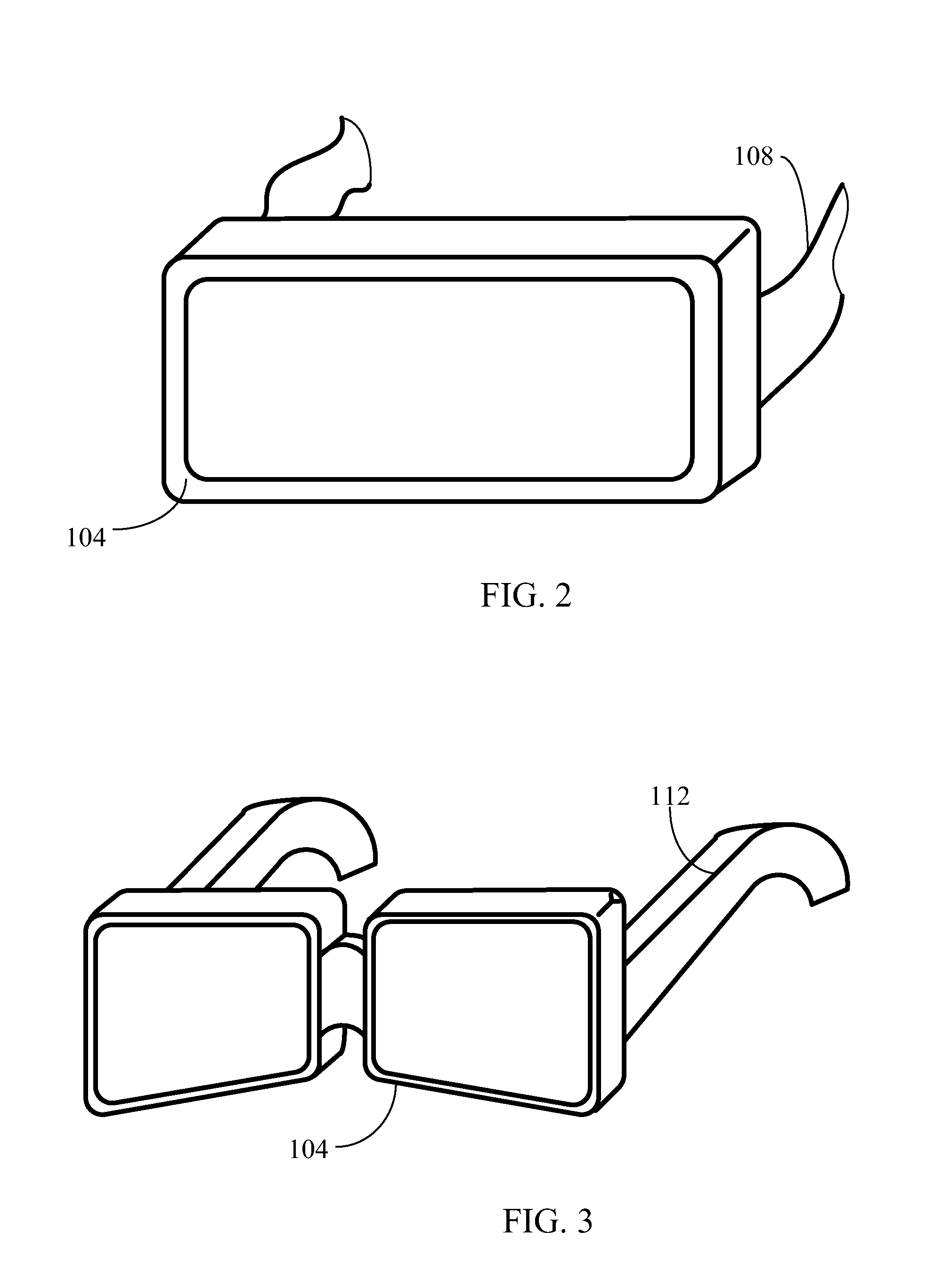Selected light wavelengths and delivery devices for the prevention and treatment of dry eye syndrome
a technology of dry eye syndrome and light wavelength, applied in the field of normal or pathological gland function, can solve the problems of dry eye, accelerated evaporation, dry eye, etc., and achieve the effects of reducing dry eye, improving meibum secretion, and promoting removal of minors
- Summary
- Abstract
- Description
- Claims
- Application Information
AI Technical Summary
Benefits of technology
Problems solved by technology
Method used
Image
Examples
example 1
[0060]Ten patients presenting with dry eye syndrome presenting with dryness, itching, irritation or redness, are divided into two treatment groups. Group A of 5 subjects is asked to apply light of 660+ / −10 nm using an apparatus essentially as shown in FIG. 4 to the lower eyelid only and below the lash line for three minutes twice weekly. The apparatus is held on the skin surface such that the light sources are less than 3 mm away from the skin surface. The apparatus does not administer heat or pressure to the eyelid. Also, the apparatus does not apply light to either of the eye canthes.
[0061]Control Group B consisting of 5 subjects is treated with traditional lubricating eye drops containing 0.4% polyethylene glycol 400 and 0.3% propylene glycol sold as SYSTANE Ultra Lubricant Eye Drops from Alcon Inc., Fort Worth, Tex.
[0062]Subjects treated with light therapy show relief of one or more symptoms of dry eye syndrome after a single treatment that continues to improve over the next sev...
PUM
 Login to View More
Login to View More Abstract
Description
Claims
Application Information
 Login to View More
Login to View More - R&D
- Intellectual Property
- Life Sciences
- Materials
- Tech Scout
- Unparalleled Data Quality
- Higher Quality Content
- 60% Fewer Hallucinations
Browse by: Latest US Patents, China's latest patents, Technical Efficacy Thesaurus, Application Domain, Technology Topic, Popular Technical Reports.
© 2025 PatSnap. All rights reserved.Legal|Privacy policy|Modern Slavery Act Transparency Statement|Sitemap|About US| Contact US: help@patsnap.com



